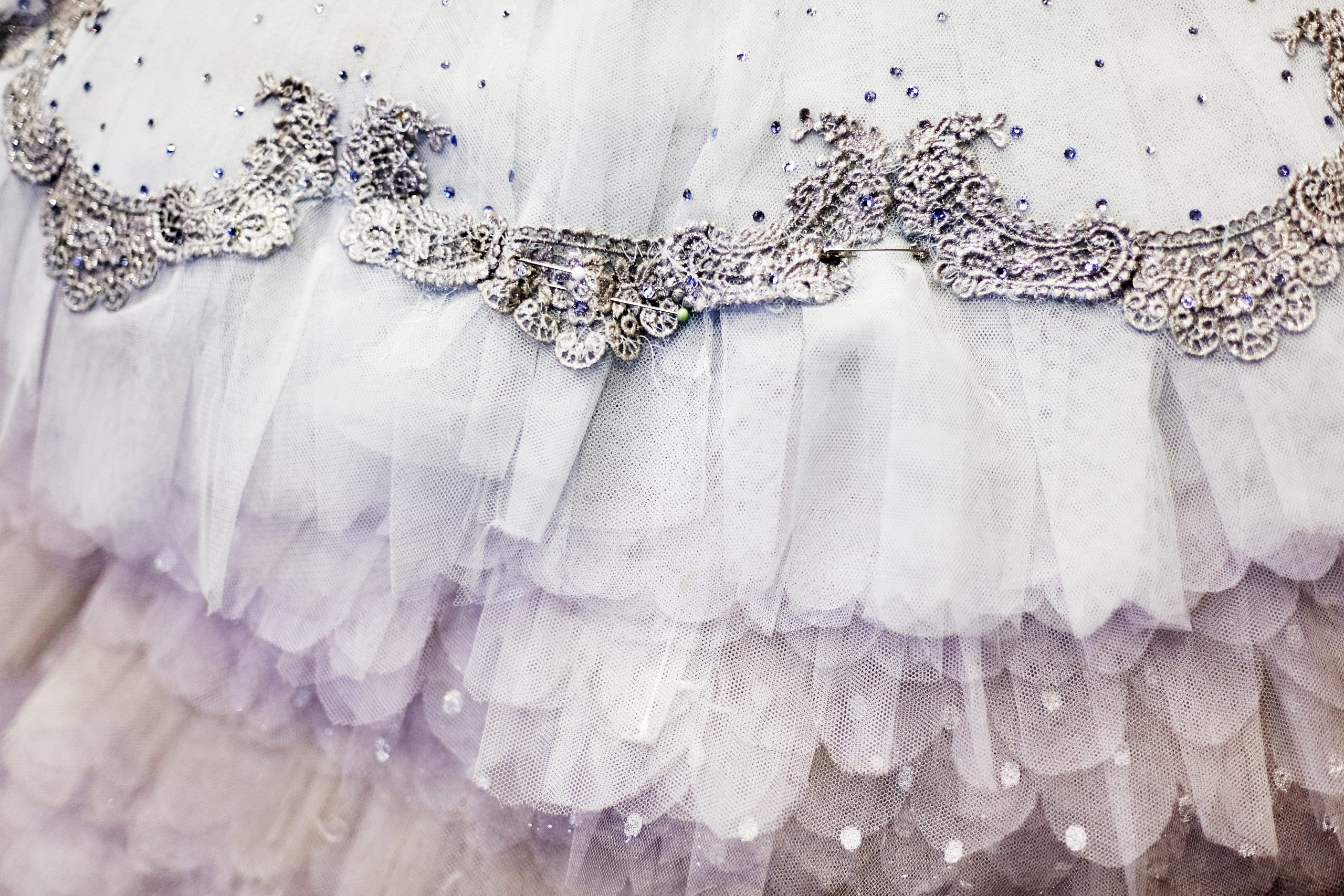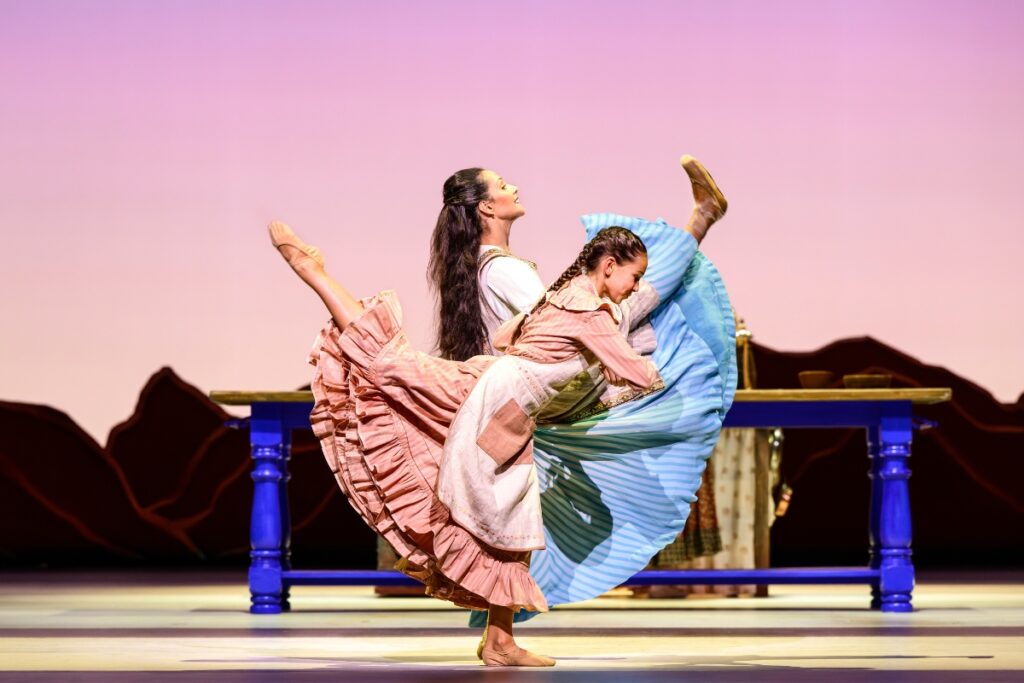Ballet competition culture: are we putting young dancers at risk?
A statement from Christopher Powney, Artistic Director of The Royal Ballet School
Competitions have long been a platform where student dancers can enjoy positive experiences and learn from sharing with like-minded, passionate young people. Many top professionals speak of how competitions gave them life-changing opportunities and a place at one of the world’s most prestigious schools or companies.
Students gain so much more from their experience than just the chance of winning. Competitions are about meeting people, making new friends, comparing differing teaching and dance styles, measuring standards against international peers and being taught by some truly inspirational teachers and coaches.
In recent years there has been a huge growth in international ballet competitions. This should surely be a good thing, benefiting more students with the opportunity to compete and be seen. This is, for the best part, true. I have, however, been concerned about the impact it is having on the students and parents. A student’s training is now so often being fast-tracked for these competitions in a way that I believe can be unhealthy. Ballet requires so much more than the physical and technical ability to execute a step or series of steps. I am not alone in feeling that some competitions foster a culture that fails to encourage the development of artists – where technique is emphasised over artistry and students seek to reach extremes before they have mastered the basics. We see audiences agog at the elaborate physical tricks on display. That audience should be looking for an expressive dancer trying to communicate emotion, dynamics, musicality, storytelling ability, alongside an accomplished, clean technique relative to their age. Isn’t this what the art-form is truly about?
This fast-tracking could potentially cause serious psychological and physical damage. Ballet institutions like ours are learning more and more about the body and mind of our students and constantly researching how to develop healthier and more resilient dancers. As educators, I believe we have a responsibility to these young people and as an industry, a duty to adapt or make changes when we see something potentially harmful is going on.
Alarmingly there are some teachers encouraging girls, as young as 9, 10 or 11 to perform variations en pointe, with some competitions permitting this. Pointe work is a defining addition to a girl’s ballet technique and requires great foundation strength. The top training schools only begin pointe work at the age of 11 (occasionally 10), after reaching the appropriate strength required. Ideally this follows three or four years of demi-pointe work and careful training, over several years, thereafter. Therefore, permitting 9 to 13-year-old students to tackle these variations, in a pressurised environment, is very worrying. There is a substantial difference between pointe work exercises in class and the level expected within a variation.
Some competitions permit young boys to perform a pas de deux at similar ages as well. Just consider how vulnerable the shoulder joint and back are when not yet fully developed or stable. In most good schools, boys start partnering carefully at 14. Why push these young bodies earlier when the risks of injury are so great? There is no good reason why the process should be fast-tracked for the purposes of the child to win a competition.
A young dancer can be pushed so hard that they burn out at 14 or 15 because they have been performing in so many competitions since they were 9, 10 or 11, sometimes travelling all over the world. I have seen this happen on more than one occasion; nobody gains from this.
I appreciate that some schools find themselves in a trap. Students and parents often believe that the schools producing the most winners of competitions are the best schools. Parents then decide to move their child, thinking that they will receive better training. This can be a total contradiction. To win a competition and subsequent recognition, a teacher/school has to dedicate considerable time to the training and perfecting of competition variations which invariably takes away from essential foundation training. Some schools require pre 16-year-old dancers to train between six and eight hours a day, six, even seven, days a week to perfect their solos. If all this time is dedicated to only a few steps within a particular variation, then the learning of other vocabulary and skills are neglected.
What about academic education? I have heard that some children have their academic education reduced to just a few hours a week. All children should have and deserve a good academic education. Fitting in any meaningful academic study surely becomes an issue if most of a child’s day is dedicated to ballet training. Not only will academic subjects help them after their dance career, but a thinking, educated dancer also makes for a far more successful artist.
Most top ballet schools schedule just three or four hours’ ballet training a day for under 16s, five days a week, encouraging rest at weekends. In order to grow healthily in adolescence, the body needs rest to avoid long-term and irreversible damage. If a child’s energy is used up training intensely for such long hours, then there is little left for growth and mental focus. Good training is about building the foundation blocks carefully and steadily so that dancers can achieve their full potential and longevity in their career.
Through years of experience, responsible competitions maintain robust criteria and approaches to ensure the expectations of a competitor are aligned with ethical and smart training and the latest research in physical and mental health.
A good example – the Prix de Lausanne competition only allows dancers to enter from the age of 15 upwards, making sure entrants are sufficiently physically developed to perform demanding vocabulary. This makes complete sense when the expectation is to practise and perform what is essentially a professional soloist or principal dancer’s variation. Even the best professionals can be challenged by these variations. At this competition the dancer’s classwork is also given great attention, offering another, possibly more informative and valuable aspect of the dancer’s standard and potential during their training years.
Competitions can be a great platform for dance students to gain valuable experience. However, we must, as an industry, review the expectations and pressures placed on young children, especially when this may impact on their health, growth and training cycle. While dancers will always be at risk of injury, I believe it is our duty to put in place strict criteria to protect children and to ensure that the artistic and technical vocabulary we ask for is age-appropriate.
I am encouraged that so many ballet leaders, teachers and coaches are proactively trying to address this. I hope that now, and into the future, we can all promote what we consider to be healthy, nurturing and in the best interests of the young people we care for.
Christopher Powney, Artistic Director, The Royal Ballet School







Excellent Article. As a retired ballet teacher and physiotherapist I could not agree more. Thank you and I hope that many parents of ” budding ballerinas ” will read this.
I wholeheartedly agree and I appreciate that the Royal Ballet School has made the decision to no longer support certain competitions. It bothers me that some schools use best practices for training their own dancers and don’t allow them to compete in these competitions, but then staff members from the schools still attend and offer scholarships to students at the competition. I think it sends very mixed messages.
Yes I agree with Mr Powney, and I doubt the ability of the teachers who push their students onto pointe too soon. In my school minimum age is 12!!Once they have learnt the basics and feet , legs and back are strong enough they learn much quicker. I also hate seeing the “tricks” in the enchainements…….Artistry/emotion is so much more important .In France where I work there is often no real structure (like RAD)although the conservatoires try hard , but standards are different in every town, and its down to the teachers to apply /make the rules. I spoke to a friend in the USA, who told me that many of the “wonders” discovered in [competitions], are actually incapable of dancing anythything else, as they reherse and work towards this goal (sometimes for 2 years)Their awareness of space , of others , of being able to keep in a line is non existant….so what kind of dancer are they producing??As I always say “one doesn’t become a dancer over night , but over time”
Wow!!! I thoroughly agree fully. I am 86 and run my own school as I love it, I never want to retire as its my passion. Training and nurturing children is an art in itself. It is true that all children are different and develope in their own way. I have lost pupils to other schools, because they are able to go any festival. I heard of one of my ex pupils of 6 years old dancing four solos at three festivals in one week. I read the words burn out, I just say her little body and mind just won’t cope in being a successful dancer even in to her teens. Parents are mainly to blame these days, as a little 6 year old just doesn’t understand. Parents are more ambitious these days and schools are more demanding on home work etc. If parents would just pull back a little and make sure firstly that their child is in good hands. Let the teacher do her job and produce a musical and expressive dancer without any force.
Ballet youth development is not regulated so is not subject to enforcement measures. Any sector of the artistic industry can have unscrupulous actors and players (including short sighted parents). The young have been exploited in ballet and suffered from very early times and taken advantage of, in terms of child safety issues, historically. Competitions are only the latest manifestations of abuse of minors.
The entities which sponsor unethical competition opportunities and provide prizes and scholarships to winners must be called out, named and held accountable. Scientific medical research and fact-based evidence is required to substantiate opinions.
Ballet is probably incapable of self regulating itself.
I come from an intense competition background, I travelled to America, Canada, all over Europe, the pressure to just focus on the competition dance to get it right, removes the love of movement, emotion and that escapism , then there is the social media, with each dancer and parent! Posting all their PR and chasing products to increase their followers, creating both on and off the stage competition , this then results in a feeling of hopelessness, if your not willing to keep up. I am 14! and started to feel like, I had already missed my opportunity in the race to be the best, to get the recognition, to get into a top dance school. Then I fractured my metatarsal, I had to stop dancing, I found the love of dance again by taking my time, by appreciating my body, by realising that racing to the finish line only shortened my experience, I was missing the journey and I wasn’t developing a passion or getting to feel that weightlessness when you dance in a way that makes you feel free. I have two weeks left in a boot and a lot of strengthening to do, but I know from being forced to stop, I will be a better dancer, because I have had the time out to reflect on dance and not on competition, I’m a young dancer and I feel we need more time to create, experiment and play with movement as well as learn the classical technique, music and performance, I really do not think we don’t have enough spare time to be competing, dance is an Art, you would not put a painter in a room and tell them they had 2 minutes to produce a masterpiece! And it will be judged against 50 other painters. I started ballet 4 years ago to enjoy dance and get away from the competition, only to find, ballet is now getting to be about competition. I agree with everything said and for the sake of dance as an Art form and the young dancers who like me have a real passion for dance, I wish dancers just received feedback on how to improve rather then rankings on who is the best, i am my only competition, learning is progress.
I totally agree with everything mr pow ney says. We need to nurture young blossoming talent gradually and give these talented children a full education in every way. Dance and theatre life can sometimes be cut short by injuries caused by forced growth in some areas. The body and mind are delicate instruments and should be looked after … as they are at schools like the royal ballet school..
I totally agree with everything Mr Powney says and basically say the same thing to my students who ask about competitions. Thank you for sharing and let us keep sharing!
Hear, hear! Ballet is not a sport, it is a high art form. The trajectory of a talented young dancer must be gradual and steady and their education best rounded and complete
This certainly provokes interesting debate. Children grow and develop at different paces. So what is appropriate for one child is not so for another. As long as the child’s welfare remains paramount, this should not be a problem. But the risks that Chris highlights are very true.
I would add that competition dancing has different stresses and strains – generally being very short intense routines over a couple of weekends. This is very different kind of physical demand from a touring company that may be rehearsing and sustaining performances for many hours throughout a day. So competition training may not engender the same type of stamina that performing a show or working in a ballet company demands. With this in mind, we must also look carefully at what kind of dancers we want to produce, and for what purpose and ensuring that there are plenty of opportunities in this country available for them when they reach maturity.